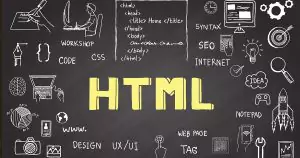When it comes to creating a visually appealing website, emphasizing certain text is crucial to capture the attention of your users. HTML provides various text formatting tags that allow you to make specific text stand out. In this article, we will explore the different methods to make text bold in HTML, along with best practices and tips. Let’s dive in!
Understanding the Importance of Bold Text
Bold text plays a vital role in highlighting important information and creating visual hierarchy on your web page. It helps users quickly identify key points, headings, or calls to action. By making text bold, you can effectively convey the significance of specific words or phrases to your audience.
Using the <b> Tag for Bold Text
One of the simplest ways to make text bold in HTML is by using the <b> tag. By wrapping the desired text within <b> and </b> tags, you can instantly apply the bold styling. For example:
<p><b>This text is bold</b>, but this text is not.</p>The <b> tag is a straightforward and effective way to emphasize text. However, it’s important to note that it is a presentational tag and is not recommended for use in modern HTML5 standards.
Making Text Bold with the <strong> Tag
The <strong> tag is another option for making text bold in HTML. Similar to the <b> tag, it adds visual weight to the enclosed text. However, the <strong> tag carries semantic meaning as well. It indicates that the text has importance or relevance beyond just its visual appearance. For instance:
<p>Before paying to learn programming, check out <strong>freeCodeCamp</strong>.</p>Using the <strong> tag not only makes the text bold but also provides additional emphasis and meaning to the content.
Applying Bold Styling with CSS font-weight Property
In addition to using HTML tags, you can also make text bold in HTML using CSS. The font-weight property allows you to control the weight or thickness of the text. By assigning a value of bold to the font-weight property, you can achieve a bold effect. For example:
<p>This is a <span class="bold">bold text</span>.</p>To apply the bold styling using CSS, you need to select the text using class, id, or element selectors and then define the desired font-weight value in your CSS stylesheet.
Choosing the Best Method for Making Text Bold
Now that we have explored the different ways to make text bold in HTML, you might be wondering which method to choose. Here are some considerations:
<b> Tag: While the <b> tag is simple to use, it is considered a presentational tag and not recommended in modern HTML standards. Its use should be limited to situations where semantic meaning is not crucial.
<strong> Tag: The <strong> tag not only makes the text bold but also adds semantic significance to it. It is the preferred choice when you want to emphasize important information with both visual and semantic impact.
CSS font-weight Property: Using the font-weight property in CSS gives you more control over the weight of the text. It allows you to create variations of boldness and adjust the styling precisely according to your design requirements.
Conclusion
Bold text is a powerful tool in HTML for drawing attention to specific words or phrases on your web page. In this article, we have explored three different methods to make text bold: using the <b> tag, the <strong> tag, and the CSS font-weight property. Each method has its advantages and best practices, so choose the one that best suits your needs. Remember to use bold text judiciously and consider the semantic meaning while emphasizing important information on your website.
FAQ
What is the recommended usage of the <b> and <strong> tags in HTML?
The <b> tag is primarily used for presentational purposes to make text bold. It does not carry any specific semantic meaning. On the other hand, the <strong> tag not only makes text bold but also implies stronger importance or urgency. It is recommended to use the <strong> tag when you want to convey both visual emphasis and semantic significance.
Is it necessary to close the <b> and <strong> tags in HTML?
Yes, it is important to close the <b> and <strong> tags to ensure proper HTML structure and maintain consistency. Remember to include the closing tag (</b> or </strong>) after the bold text to avoid any rendering issues.
Can I style the <b> and <strong> tags using CSS?
Yes, you can apply additional CSS styles to the <b> and <strong> tags to further customize their appearance. By targeting these tags in your CSS stylesheet, you can modify their font size, color, or other properties to match your desired design.
Is it possible to nest <b> and <strong> tags within each other?
Yes, you can nest the <b> and <strong> tags within each other to create hierarchical emphasis. However, it is important to maintain a logical structure and avoid excessive nesting, as it may lead to confusion and affect the readability of your content.
Are the <b> and <strong> tags supported in all web browsers?
Yes, both the <b> and <strong> tags are widely supported by modern web browsers. They are part of the HTML standard and have good cross-browser compatibility. However, it is always a good practice to test your web page in different browsers to ensure consistent rendering.
Follow us on Reddit for more insights and updates.





Comments (0)
Welcome to A*Help comments!
We’re all about debate and discussion at A*Help.
We value the diverse opinions of users, so you may find points of view that you don’t agree with. And that’s cool. However, there are certain things we’re not OK with: attempts to manipulate our data in any way, for example, or the posting of discriminative, offensive, hateful, or disparaging material.